Many thanks to Carol Putnam and Silver Frith of Yasodhara Yoga Halifax for inviting us to dive into the watery depths of emotions.
Energy…is here now in the Manipura Cakra where the imagination and strong emotions, in interaction with the sense of sight, have welded it into desires. The images welling up are like clay, with a form yet soft, able to change shape. But once they are put into the kiln of the emotions they are hardened by self-will and, if left there, can in the course of time become as hard as rock, difficult to destroy when the aspirant becomes aware that this must be done.
(Kundalini Yoga for the West, Swami Radha, p 145)
1) Choose An Emotional Situation
- Bring to mind an individual with whom there is an emotional situation (current or past) that you want to explore.
- Practice the Divine Light Invocation placing this individual in the Light.
- Stand in the Mountain Pose – What are the facts of the situation? Can you allow yourself to look at the facts? What emotions arise as you think about this situation? Write.
- Practice the 4/4 breath for a few minutes. With your situation in mind, gaze at the central plate of the 3rd Cakra in the Kundalini Chart.
- Look at the symbols, asking: What symbol stands out or resonates with me? How does this symbol relate to the situation? What message does the symbol hold for me?”
- One more time, put the situation – the circumstances, the people and yourself – in the Light through the Divine Light Invocation. Then write.
2) Exploring Emotions Through Hatha Yoga – Hidden Language
Since the crane is a water bird, getting food from the water, which is symbolic of the emotions, we must think also of the feeding of those emotions. When the emotions are positive and directed, the cry of the crane can imply good fortune, but if they are out of control and negative, the cry will indicate bad fortune.
(Hatha Yoga: The Hidden Language, Swami Radha, p 190)
- Practice the Divine Light Invocation seeing yourself in Crane Pose.
- Water can symbolize the emotions, the unconscious, the imagination. Work with the Crane Pose asking How can I direct my emotions? What emotions do I want to feed? (Hatha Yoga: The Hidden Language, p 193).
3) Sight and Emotion
Sight (inner sight) is strongly linked with concentration…Concentration can be roughly described as seeing in the mind’s eye at will, for a specific length of time, a chosen object.
(Kundalini Yoga for the West, Swami Radha, p 148)
- Chant Hari Om, the healing mantra, for a few minutes, and then sit quietly. Bring to mind the emotional situation from the first exercise. Now gaze in a mirror at your face for 2 minutes. What do you see? What kind of face do you see? Make notes.
Here in the Manipura or Third Cakra, the interplay of the forces of sight and emotions is particularly powerful. (Kundalini Yoga for the West, p 142)
- Do the ‘Functioning From My Centre’ practice for 3 minutes – smoothly lift the hands up to the heart center as if lifting the emotions up to the heart… and during that time, pause twice to look inward.
- Return to a quiet sitting position and once again, gaze at your face in the mirror for 2 minutes. What do you see? What kind of face do you see? Now close your eyes and visualize your face. Make brief notes. Continue to gaze in the mirror, then closing the eyes, visualizing, then making notes – until you are able to hold the image with closed eyes. When you can see in your mind’s eye the image of yourself that was reflected in the mirror, project your image into the sky. Make notes on this experience. (Kundalini Yoga for the West, p 144)
4) Cultivating the Emotions
The transmuting of emotional forces into spiritual energy is accomplished through the practice of worship….In the beginning, worship is a wonderful way to cultivate emotions and transmute them into a high level of refined feelings that will become a spring of spiritual energy.
(Kundalini Yoga for the West, Swami Radha, p 157)
- From an array of images of deities, choose one. What qualities do you see in this image that you would like to cultivate in yourself? Choose the quality that resonates the most with you. Write.
- Over the days and weeks to come, commit to working with this quality by drawing on various practices:
- Chanting: Concentrate on your chosen deity image for 1 minute. Close your eyes and visualize the image in as much detail as possible. Now, bring to mind the quality you have chosen to cultivate. Chant Hari Om, the healing mantra, holding this quality in your mind. Make notes.
- Divine Light Invocation, Functioning from my Center, Mantra…
- Each day, take the quality you are working with into a practice of your choosing. Commit to a specific numbers of days or weeks. Make notes daily on what arises.
- Can this focus on cultivating a quality inspired by the Divine impact the emotional situation you chose to focus on in the first exercise? Do you observe an impact? How have your emotions in this situation shifted? Make notes on your observations.
5) Knowing myself will make me free.*
The aspirant has to take full responsibility for the cultivation of the emotions. Even your own Higher Self is only going to cooperate if there is evidence of effort and will and desire to achieve a higher state beyond the ordinary.
(Kundalini Yoga for the West, Swami Radha, p 155)
In Kundalini Yoga for the West, Swami Radha stresses over and over the need for reflection – to be aware of:
- habitual ways of looking at things (p 146)
- emotional blindness (emotions can interfere with clear sight…) (p 152)
- intentional blindness (every emotion erects it’s own screen, preventing clear sight) (p 141)
….in order to see facts as they are instead of what we want to see.
- Review your notes and thoughts on this work with emotions. Do a practice and then draw for 10 minutes. Do another practice, look at your drawing and make notes.
- Revisit your drawing each day for a period of time, bringing in practices. What do you see? What is changing? How is your sight becoming clearer?
*(Kundalini Yoga for the West, Swami Radha, p 142)


Comments are closed.